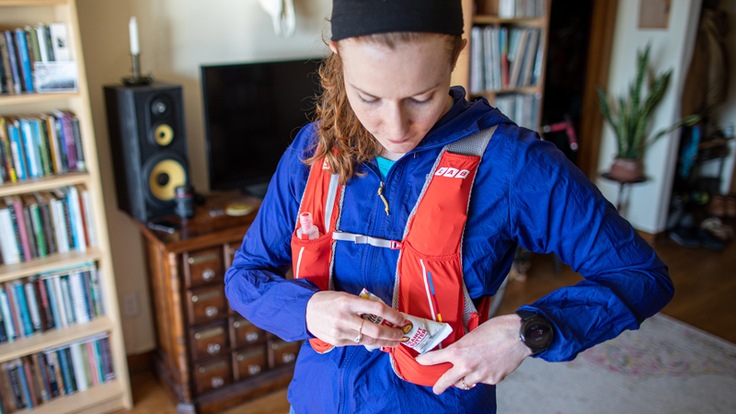The beauty of running is that you don't have to carry a bunch of gear to get out there. In its simplest form, running requires only a pair of quality shoes and comfortable running clothes. However, runners heading out on longer outings will often carry some amount of food, water, clothing and extra gear with them, particularly when trail running.
Choosing from all the different methods for carrying these things is not always simple. Weather, location, terrain, length of the run and your level of experience all influence which method is best for you. You have two main considerations when deciding how to carry your stuff while running:
- Type of running pack or other storage solution: Your options for carrying needed water, food, gear and clothing include arm pockets, race belts, handheld water bottles, vest packs and daypacks.
- Capacity and trip length: The size of pack or other storage solution is linked to the length of your run and how much water and gear you need to carry.
Video: How to Carry Your Gear for Running
Options for Carrying Your Running Gear
You have many different choices for carrying what you need while running.
Arm Pockets
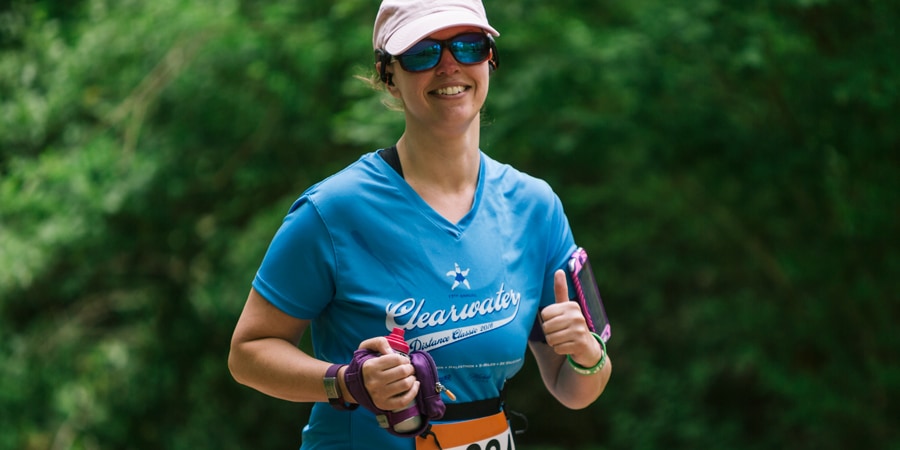
These simple carriers strap around your arm and are designed to hold your phone, a house key, some cash and that's about it. Use these only for the short forays where you require your phone for listening to music or recording your run with a fitness app. You can use an arm pocket together with a handheld water bottle, a race belt or a waistpack when you want to carry water and/or food.
Race Belts
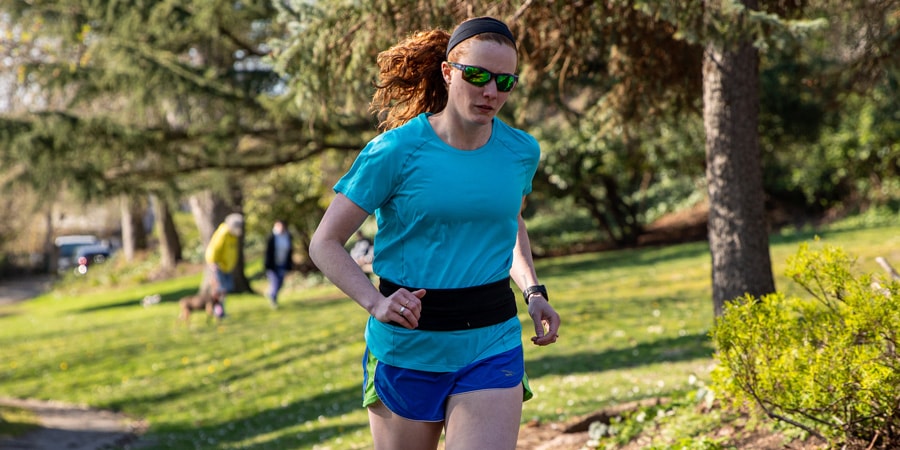
Race belts are very compact, low-profile storage solutions that clip around your waist. They typically provide room for little more than a phone, some cash, a credit card, a house key, an ID and some energy food. You can usually secure these essentials in a zippered pocket.
Since most race belts do not have a way of carrying fluids, they are great for use in conjunction with a handheld water bottle or during a run that has access to water along the way (in the form of water fountains, aid stations, etc.).
Handheld Water Bottles
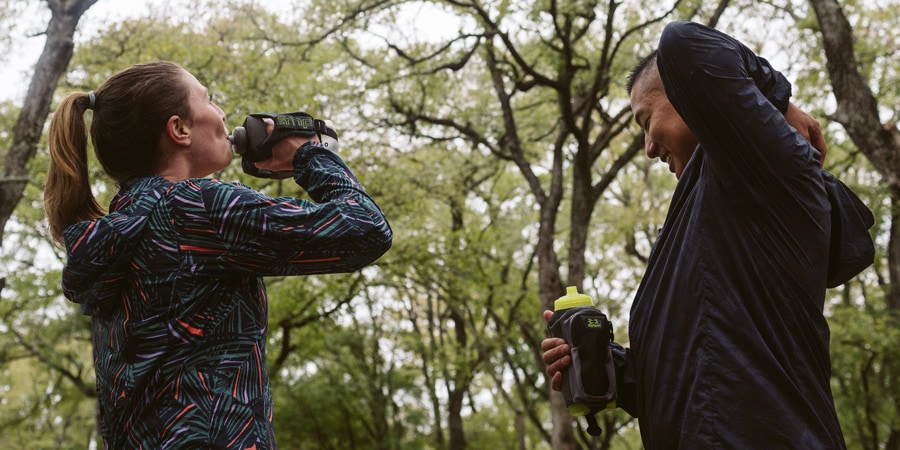
Handheld water bottles are one of your lightest-weight, most-compact options for carrying water and a few essentials. Their limited carrying capacity makes them great for runs where you have access to food and a way to refill the bottle (such as a supported run or a run where you do loops that bring you back to a drop point, such as your car.)
Most of these bottles hold about 16-20 fl. oz. They typically feature a strap system that incorporates a zippered pocket. The strap keeps the bottle securely on your hand and lets you relax your hand so you don't have to grip the bottle the entire time you're running. Many bottles are ergonomically shaped to fit comfortably in either palm. The zippered pocket secures a few small items, like a phone, cash, credit card, and an energy gel or two.
Some runners complain that they feel unbalanced when running with a single handheld bottle. To solve this, you can run with one on each hand. This also gives you access to more water. Another complaint is that a handheld can actually tire out the arm that is carrying the bottle. This might seem surprising, but 16 fl. oz. of water does weigh about 1 pound. Add in the weight of your phone and some snacks, and then imagine how many times you swing your arms during even a short run and you begin to get the idea.
Hydration Belts
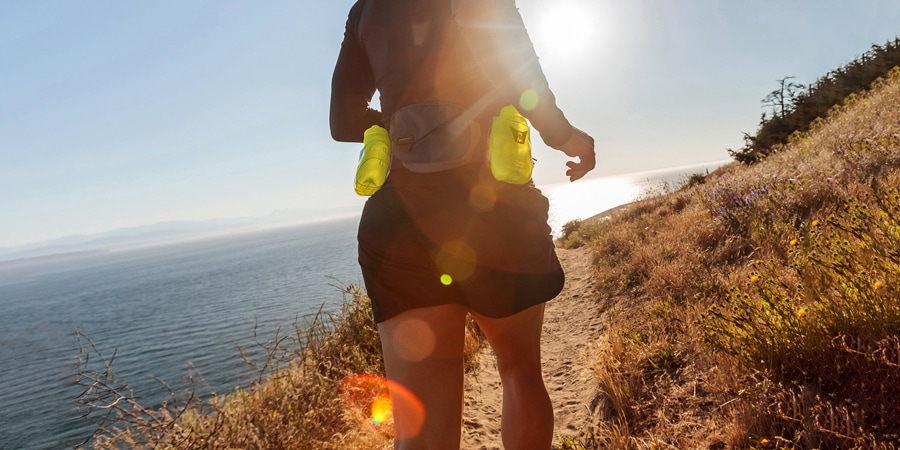
Hydration belts typically offer more storage than a handheld bottle, making them good for longer runs that require more gear. Some are big enough that you can stash a compact windbreaker in a pocket or lash it to the outside with a bungee cord.
Most hydration belts include a single 16-20 fl. oz. water bottle that slips into a sleeve that's accessible while you're running. Some come with multiple smaller bottles to distribute the weight around the belt and give you the option of drinking different fluids during your run, such as water and an electrolyte drink. This design also lets you choose to carry all the bottles or leave some at home, depending on how much water you need during your run.
For trail runners, a plus compared with handheld bottles is that hydration belts keep your hands free for sections of trail that require scrambling or to catch a fall if you lose your footing.
Running Vests and Packs
If you run long distances, especially in remote areas, then you'll need to carry more food, water and gear than a race belt, handheld bottle or waistpack allows. A running vest or backpack has the capacity to fit the extra essentials. The line between running vests and backpacks is sometimes blurry. A running backpack generally has a larger capacity and looks more like a pack you'd take on a day hike, while a running vest usually has a lower profile and lots of smaller pockets for stowing food, water, clothing and extra gear.
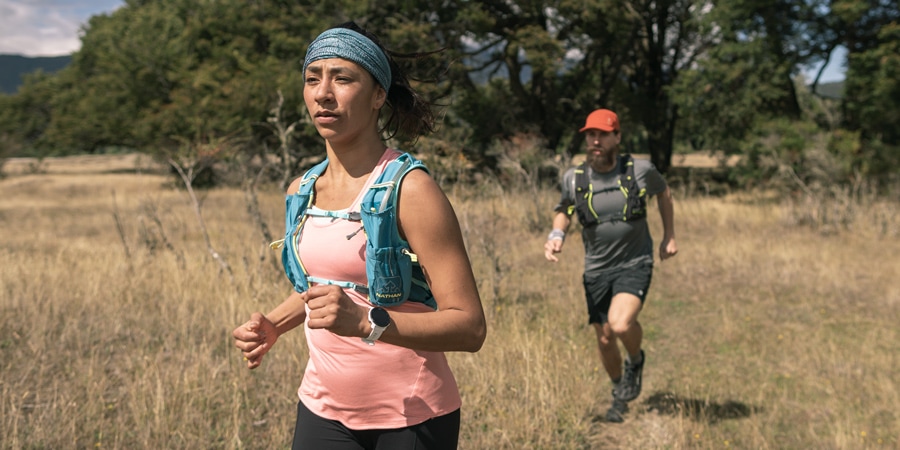
Running vests: Also called running hydration vests, these look like a vest and are designed to fit snug to your body. They are similar to a backpack in that they are carried over the shoulders and on your back, but they tend to be a bit lower profile, feature more pockets on the front of the shoulder straps, and don't have a hipbelt like most packs do. Running vests feature multiple elastic closures to stabilize the vest and limit bouncing while you're running.
Running vests can hold a surprising amount of things in individual pockets, which helps keep you organized. Many vests include dedicated spots for storing water bottles on the front of the shoulder straps, allowing you to monitor how much water you have left and giving you easy access to the bottles for drinking and refilling. Also, carrying two bottles lets you drink two different fluids, like water and an electrolyte drink. Most vests also accommodate a hydration reservoir (sometimes sold separately) for runners who like to sip from a tube.
Learn more in our article, How to Choose a Running Hydration Vest.
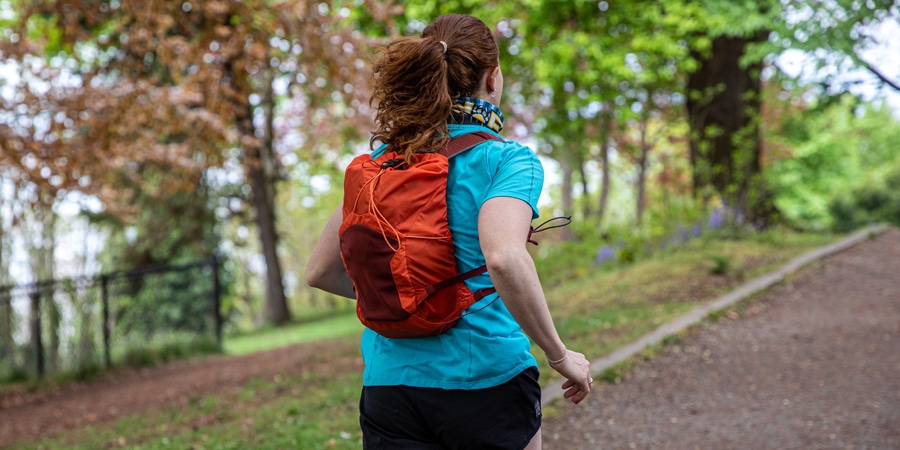
Running backpacks: These are a lot like a daypack that you'd take on a hike but many of them feature running-specific features, such as a low-profile design, a simple hipbelt or no hipbelt, and a bunch of pockets that are easy to access while you're running.
Running backpacks sometimes provide more storage than vests, mostly in the back of the pack, making them a good choice for a run that requires lots of gear and extra clothing. Some runners find packs to be a bit bouncier than vests because of how the gear is stowed.
Nearly every running backpack accommodates a hydration reservoir for easy sipping on the go (reservoirs are sometimes sold separately). Many also include pockets on the shoulder straps or sides where you can stow water bottles.
Running Packs by Trip Length

The length of your run will often determine how much water and gear you need to carry, which in turn can dictate the pack that's best for you.
In general, the longer your run, the more food, water and gear you need to carry. The location of your run, the weather and your level of experience also play a role. A short run in a remote area or foul weather can necessitate that you carry more gear than a long run in the city, where you're never too far from a water fountain or a place to get food.
Also, keep in mind that there is an element of personal preference. One runner's needs can differ greatly from another runner's needs on the very same run.

Short runs (approximately 1 hour or less) or a race with multiple aid stations: For short runs, arm pockets, race belts and handheld water bottles are all reasonable options. Arm pockets and race belts do not carry water, so you'll likely want to use them together with a handheld bottle.

Medium runs (approximately 1-3 hours): If you're running in an area that has access to potable water, such as a water fountain or a race aid station, and you don't mind stopping along the way to refill, then a handheld bottle is a good option for medium-length runs.
A waistpack that holds one or two water bottles carries more food, gear and water than a handheld, making it a good choice for runs in more remote locations. You can combine a waistpack with a handheld water bottle for greater liquid capacity.
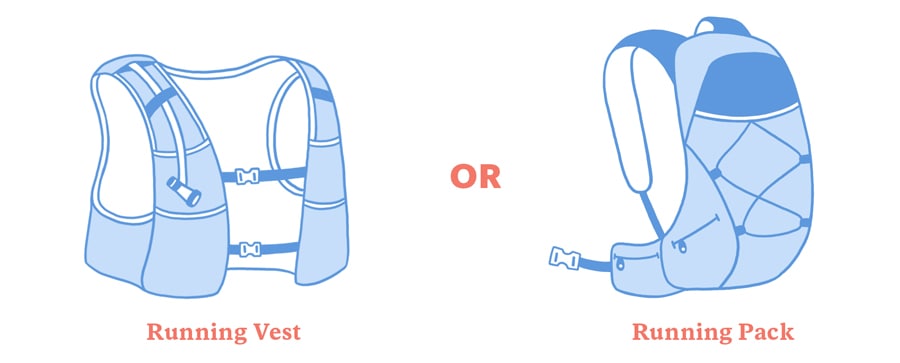
Long runs (approximately 3 hours or more): Many runners who head out for 3 hours or more will use a running vest or running pack. On long-distance runs, especially if you're in a remote location, you're going to carry more food, clothing, gear and water than a waistpack and handheld bottles can hold.
Packing Tips for Running
As you run more, you'll develop a system for how you pack and where you like to store things. Here are some tips to get you started:
Always Secure Your Keys
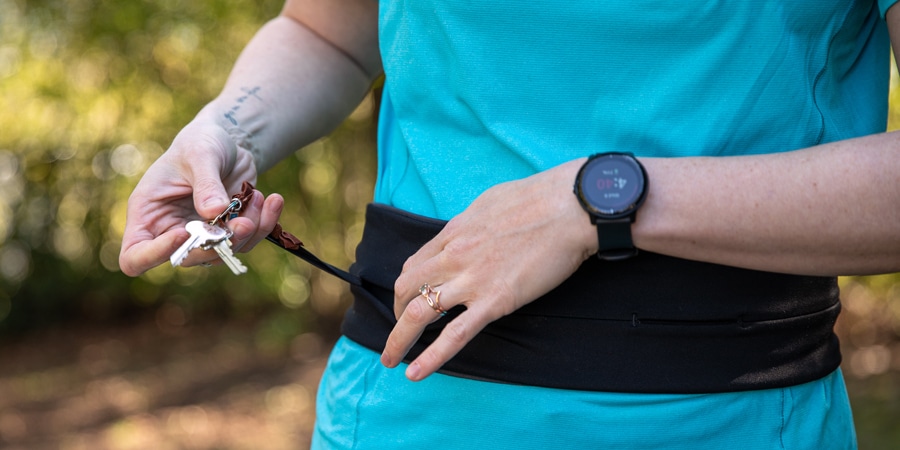
Don't be that runner who loses their keys somewhere along the run. Most packs, running vests, waistbelts and handheld bottles have a specific spot for stowing your keys. Look inside a zippered pocket for a clip or stretchy loop that you can attach your keys to. At the very least, toss them in a zippered pocket.
Also, keep in mind that you don't need to take all your keys with you. Extra keys add unnecessary weight and they will jingle constantly as you run. Your house key and/or car key are probably all you need.
Protect Your Phone
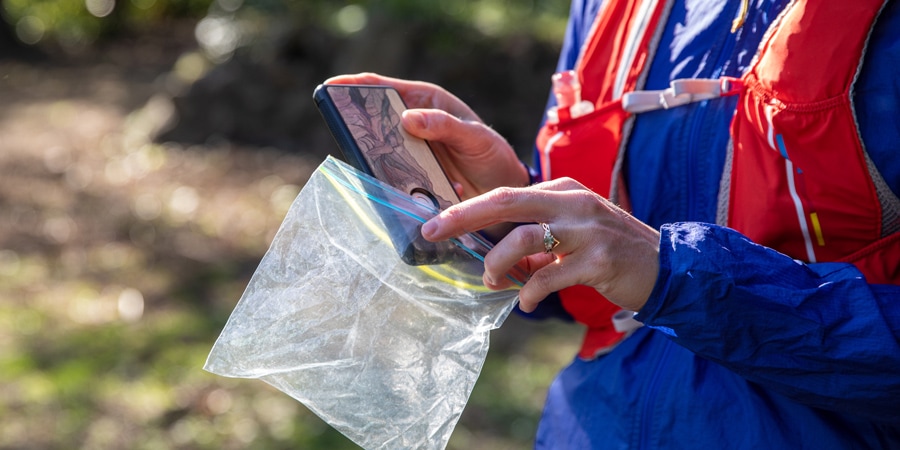
Shielding your phone from moisture means not only keeping it away from rain but also sweat. Stashing your phone in a next-to-skin pocket can expose it to enough moisture and humidity to damage the phone and potentially void a warranty. To avoid this, use a waterproof container, whether that's a zip-top bag or a durable plastic case specific to your phone. If you like to have your phone handy for snapping pictures, look for a backpack or a running vest that includes a water-resistant pocket on the shoulder strap that can keep your phone easily accessible and protected from the elements.
Keep Food and Water Within Reach
If you're on a long enough run that you're going to need something to eat while you're out, it's important to keep your food and water accessible.
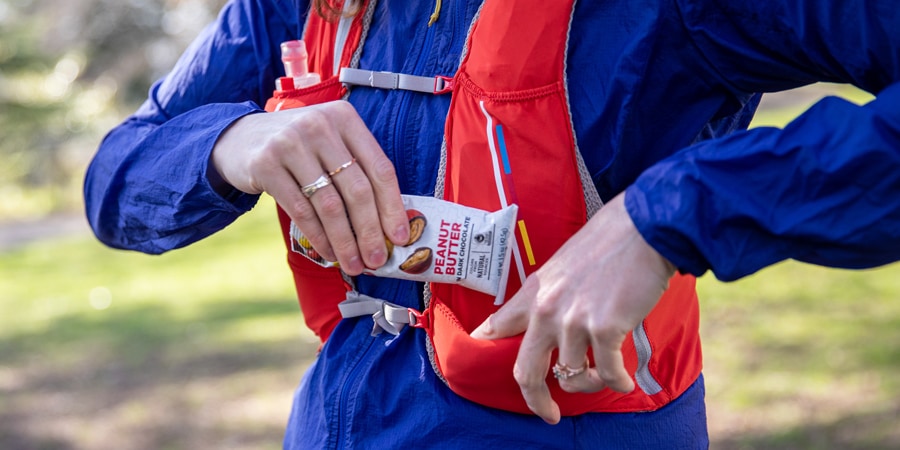
Food: Store energy bars and gels in your shorts pockets or in a pack pocket that's easily accessible, such as on the hipbelt or the side of the pack. If you prefer to eat "real" food, like a peanut butter and jelly sandwich, pre-make the meal into portions that you'll eat at one time. For example, cut that sandwich in half or into quarters so you won't have to put it back in the pack after a couple bites.
A smart option for carrying energy gels is to use a gel flask and fill it from a bulk container of gel. The upside is that you carry one container rather than several individually packaged gels and you won't have trash to keep track of while you run. The downside is that you have to clean the flask out when you get home.
Learn more about food in our article, Nutrition Basics for Trail Running.
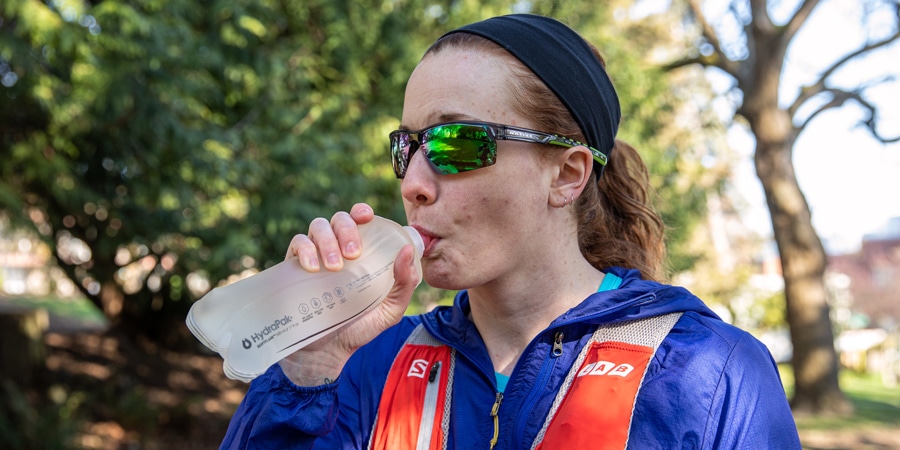
Water: If you're wearing a running pack or vest, keep your water bottles in front or side pockets that you can reach easily, or use a hydration reservoir.
A hard plastic squeeze bottle can sometimes cause discomfort during a long run. It can dig into ribs or rub on your side or back. A few manufacturers make extremely soft bottles that conform to your body to eliminate discomfort. They also reduce sloshing, and weigh next to nothing when they are empty.
Learn more about carrying and drinking water in our article, Hydration Basics for Trail Running.
Carry Extra Clothing
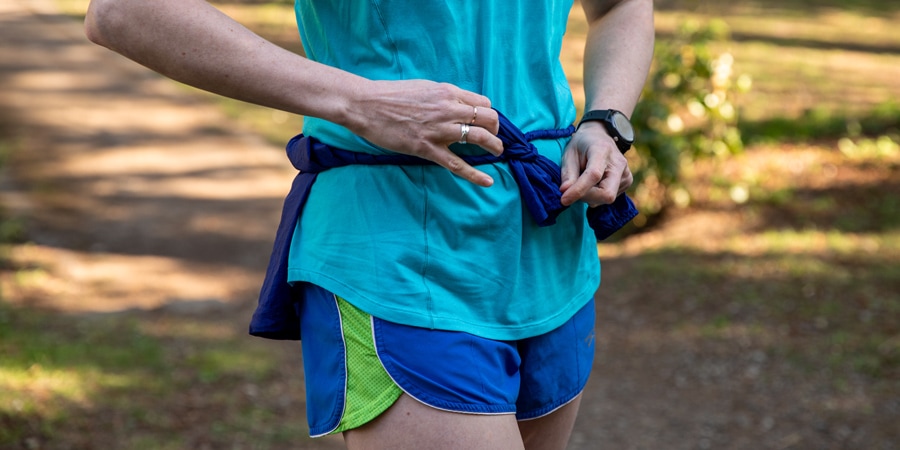
For short runs in pleasant weather you may not need more than what you're wearing, but when you head out for longer, more-challenging runs, extra layers are essential.
If you're running with only a handheld water bottle you won't have a spot to store an extra layer so you'll have to resort to tying a long-sleeve shirt around your waist. To do so without creating a cape that will flap behind you, grab the shirt by the sleeves and roll the body of the shirt up around the axis formed by the outstretched sleeves. Then tie the shirt around your waist in a tidy bundle.
If you're carrying a backpack or running vest, stash your extra clothing inside the pack or lashed to the outside with a bungee cord. Keeping a windbreaker or long-sleeve shirt within easy reach allows for quick transitions.
For cool-weather runs, keep a lightweight winter hat and gloves in a spot that you can quickly get to, such as a side pocket on a pack. Ideally you want to be able to pull a hat and gloves on and off without stopping running. A neck gaiter is a versatile item to have along. It can be used as a hat, headband, wristband or a towel for wiping sweat off your brow.
Learn more about dressing for running in our article, Running Clothing: How to Choose.
Stay Organized
If you're bringing along enough stuff to require a larger pack, such as a backpack or running vest, then it's important to stay organized so you can find what you need when you need it. To do so, always keep your headlamp, multitool, food, phone and other essentials in the same place in your pack so you'll know right where to reach without stopping running. Packing the same way every time will also help you leave home without forgetting a critical item. Having a dedicated pocket in your pack for trash will keep you from accidentally littering when you reach into a pocket for another energy bar.
Take a look at our Trail-Running Checklist to make sure you don't forget anything.
